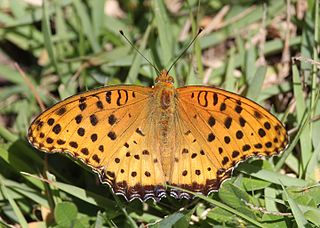Related Research Articles

The Green Line is a rapid transit line on the Chicago Transit Authority's "L" system. It is the only completely elevated route in the entire system; all other routes either have underground sections or sections at grade. It utilizes the system's oldest segments, extending 20.695 miles (33.305 km) with 30 stops between Oak Park/Forest Park (Harlem/Lake) and Chicago's West Side, to the Loop, and then to the South Side neighborhoods of West Englewood (Ashland/63rd) and Woodlawn. As of 2021, an average of 14,940 passengers board each weekday.

The Keiyō Line is a railway line connecting Tokyo and Chiba in Japan, paralleling the edge of Tokyo Bay. It is operated by the East Japan Railway Company. The line forms part of what JR East refers to as the "Tokyo Mega Loop" (東京メガループ) around Tokyo, consisting of the Keiyō Line, Musashino Line, Nambu Line, and Yokohama Line. It provides the main rail access to the Tokyo Disney Resort and the Makuhari Messe exhibition center. The terminus at Tokyo Station is located underground, some distance to the south of the main station complex approximately halfway to Yūrakuchō Station. This means transferring between other lines at Tokyo Station can take between 15 and 20 minutes. The name "Keiyō" is derived from the second character of the names of the locations linked by the line, Tokyo (東京) and Chiba (千葉). It should not be confused with the Keiō Line, a privately operated commuter line in western Tokyo.

The 1899 VFL season was the third season of the Victorian Football League (VFL), the highest level senior Australian rules football competition in Victoria. The season featured eight clubs, ran from 13 May until 16 September, and comprised a 14-game home-and-away season followed by a finals series featuring all eight clubs.

Hypolimnas misippus, the Danaid eggfly, mimic, or diadem, is a widespread species of nymphalid butterfly. It is well known for polymorphism and mimicry. Males are blackish with distinctive white spots that are fringed in blue. Females are in multiple forms that include male-like forms while others closely resemble the toxic butterflies Danaus chrysippus and Danaus plexippus.

Euthalia lubentina, the gaudy baron, is a species of nymphalid butterfly found in South, Cambodia, and Southeast Asia. It was first described by Pieter Cramer in 1777.

The Indian fritillary is a species of butterfly of the nymphalid or brush-footed family. It is usually found from south and southeast Asia to Australia.

Doleschallia bisaltide, the autumn leaf, is a nymphalid butterfly found in South Asia, Southeast Asia, and Australasia. In Australia it is also known as the leafwing.
Pyrausta pyrocausta is a moth in the family Crambidae described by George Hampson in 1899. It is found in the Brazilian states of São Paulo and Paraná.
Scoparia australiensis is a moth in the family Crambidae. It was described by George Hampson in 1899. It is found in Australia, where it has been recorded from Western Australia and Queensland.
Blepharomastix fusalis is a moth in the family Crambidae. It was described by George Hampson in 1917. It is found in Colombia.
Pycnarmon aripanalis is a moth in the family Crambidae. It was described by George Hampson in 1899. It is found in Australia, where it has been recorded from Queensland.
Pycnarmon syleptalis is a moth in the family Crambidae. It was described by George Hampson in 1899. It is found in Loja Province, Ecuador.
Syllepte agraphalis is a moth in the family Crambidae. It was described by George Hampson in 1912. It is found in Bhutan and Assam, India.
Udea diopsalis is a moth in the family Crambidae. It was described by George Hampson in 1913. It is found in Chile.
Udea fusculalis is a moth in the family Crambidae. It was described by George Hampson in 1899. It is found in Mexico (Orizaba), Peru and Loja Province, Ecuador.
Udea melanephra is a moth in the family Crambidae. It was described by George Hampson in 1913. It is found in Colombia and Bolivia.
Udea melanostictalis is a moth in the family Crambidae. It was described by George Hampson in 1916. It is found in Kenya.
Udea nomophilodes is a moth in the family Crambidae. It was described by George Hampson in 1913. It is found in Chile.
Udea phaealis is a moth in the family Crambidae. It was described by George Hampson in 1899. It is found in Orizaba, Mexico.
Udea scoparialis is a moth in the family Crambidae. It was described by George Hampson in 1899. It is found in Tibet, China.
References
- ↑ Nuss, M.; et al. (2003–2014). "GlobIZ search". Global Information System on Pyraloidea. Retrieved July 15, 2014.
- ↑ Proceedings of the Zoological Society of London 1899: 241
 This article incorporates text from this source, which is in the public domain .
This article incorporates text from this source, which is in the public domain .